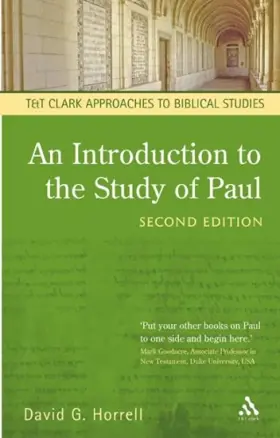

An Introduction to the Study of Paul (T&T Clark Approaches to Biblical Studies)
This study introduces its readers to the differing positions and methods developed by contemporary scholars in Pauline studies. By setting out these views, and the evidence on which they are based, it equips the reader to approach the study of Paul with an awareness of the range of current debate and a knowledge of the evidence and arguments they will encounter. After considering Paul's importance and influence, and the important sources for the study of Paul, the book examines: the earliest period of Christianity - from Jesus to Paul; Paul's life before and after his 'conversion'; his individual letters; the major elements of his theology; his attitude to Israel and the Jewish law; new approaches to the study of Paul, including social-scientific and feminist approaches; and Paul's legacy in the New Testament and beyond. This volume now includes study questions at the end of each chapter as well as updated reading lists.

